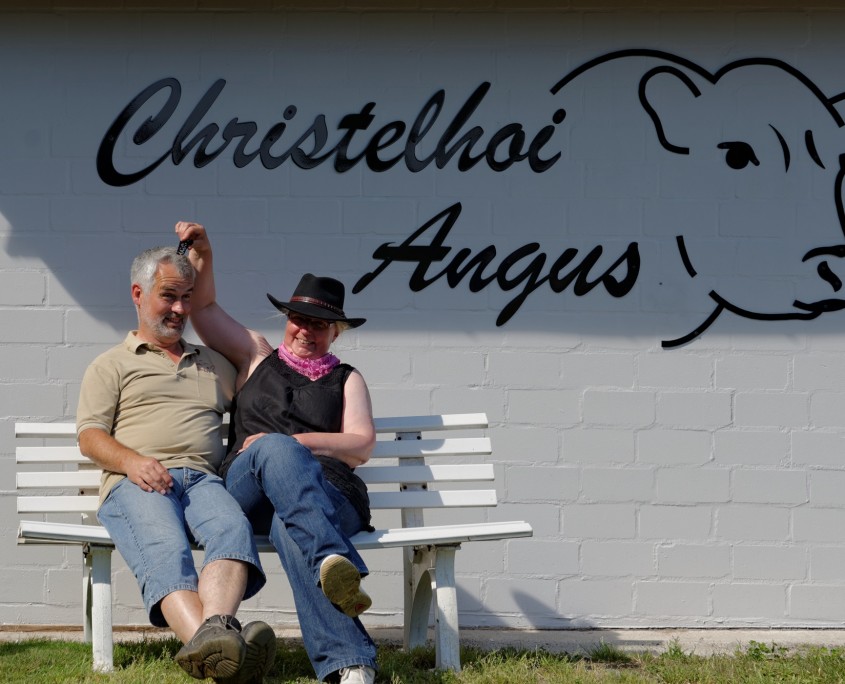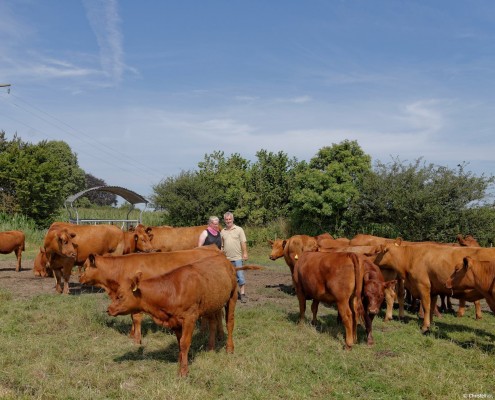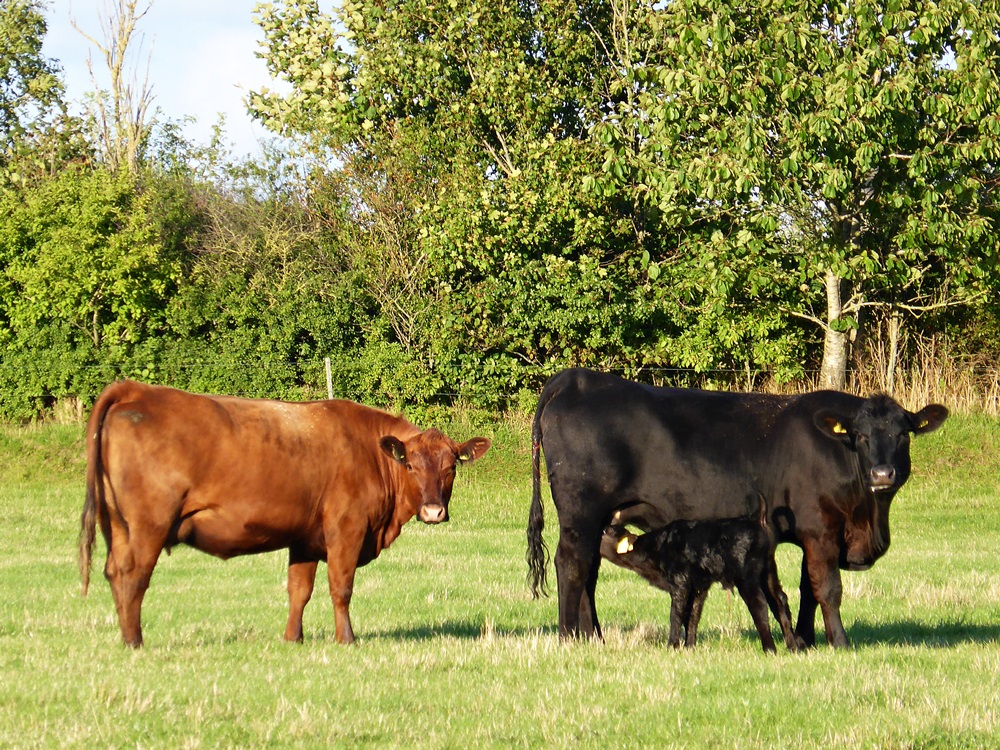Kurt & Traute Clausen
Both of us grew up around dairy cattle and cattle breeding.
The symbiosis of man and animal has always been our lives’ motto: “I feed the cow and care for it and in return it provides me with its milk, my livelihood.”
Even back then, we placed a high value on the calm and stress-free handling of the animals. We also determined the most important breeding objectives. A cow must have good feet and be thrifty, medium-framed, long-lived, calm and docile. We found these characteristics and the genetic polledness in the Angus cattle.
Not much has changed. Our cows are still red, although a bit meatier. They are characterized by a great milk yield, but are much calmer and easier to handle than dairy cattle. We also let our cows be milked and the calves are nursed by their mothers for 8 to 10 months.
As a cow only births one calf per year, calving ease is increasingly relevant. Calving ease, meaning a low birth weight of the calves, as well as a wide pelvis are significant breeding objectives. The heredity of the bull also plays a significant role. For our heifers, who are served for the first time at 15 months, we preferably use Australian or Canadian bulls, who pass on good breeding values, such as calving ease or a reduced gestation period (up to 8 days). The birth weights are then around 30 to 35 kg.
When we made the change to suckler cow husbandry from 2006 to 2008, we started out with 12 German Angus cows from Lower Saxony, Goldi MS (Gag son) of Carl-Heinrich Meyer from Stemwede as herd bull, as well as 8 embryos from Canada. From this first cross of the Angeln Red Cattle with an Angus bull, we reared 30 breeding cows.
The following year, the implanted embryos became four female and two male Aberdeen Angus calves. There were no complications during their births and they impressed with their trusting nature and vitality.
Our heifers were inseminated by the Australian sire Red Label. They calved 9 months later without any complications. After only 10 – 15 minutes the calves were suckling at the udder.
That’s the way Angus is supposed to be!
Our breeding bulls are sought-after all over Germany as well as abroad.
In June 2013, we lost 10 of our best pregnant Red Aberdeen Angus cows due to a lightning strike . Of our AA cows, only Blueberry, who was on a different field, remained. To close the gap in our Angus herd, we bought five weaned calves in Denmark and the Czech Republic respectively, as well as a cow from Canada. Diversity is also ensured by the production of our own, as well as purchased embryos.
This allows for a wide genetic diversity as the basis for the continued breeding of Christelhoi Angus!


